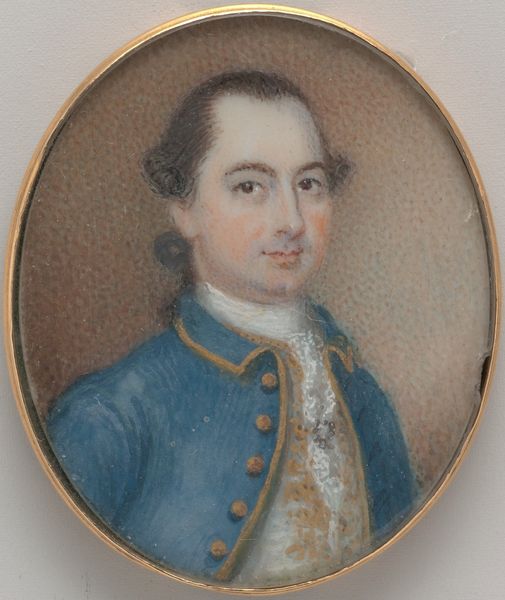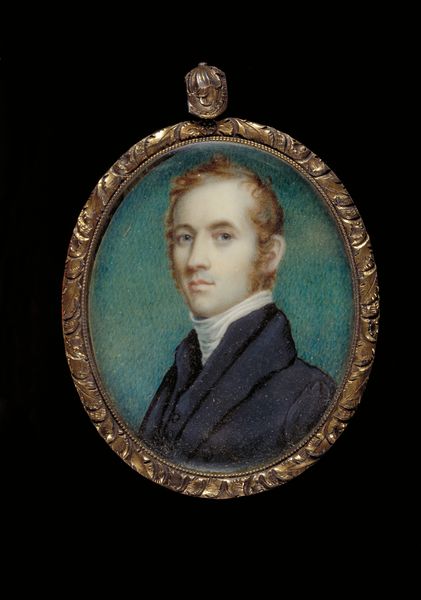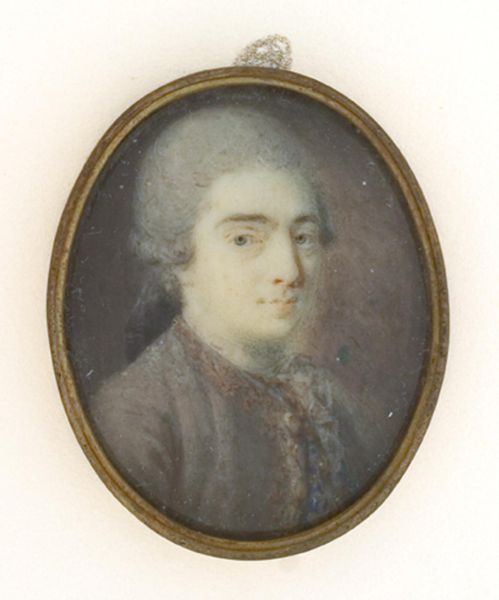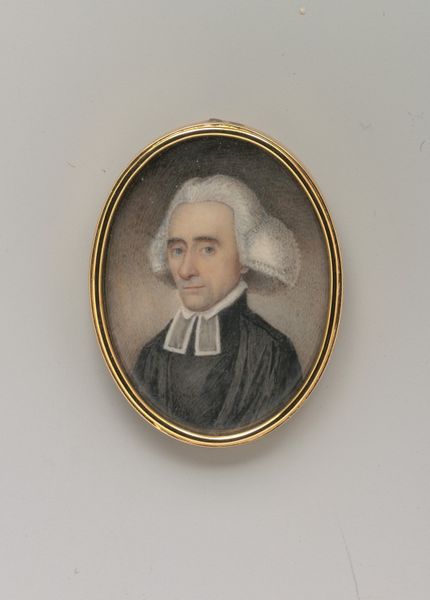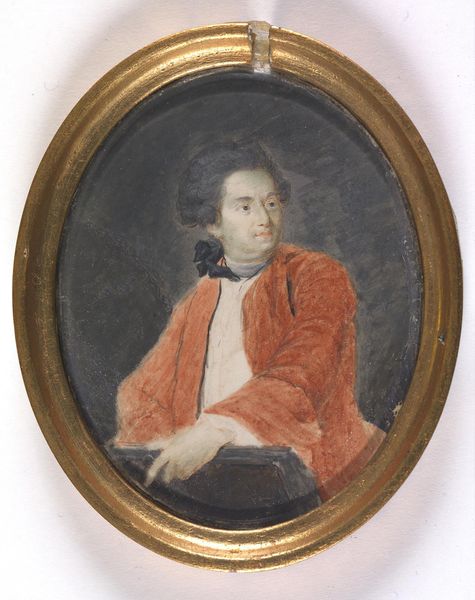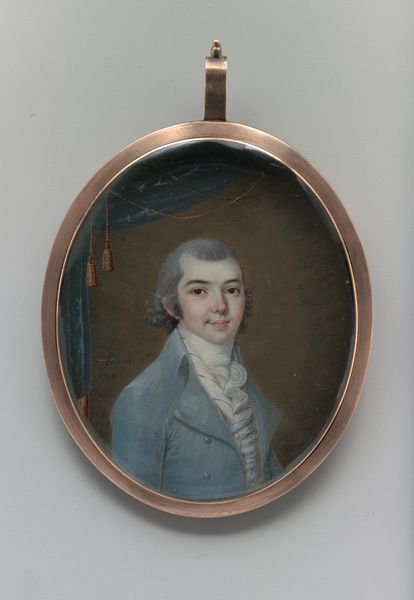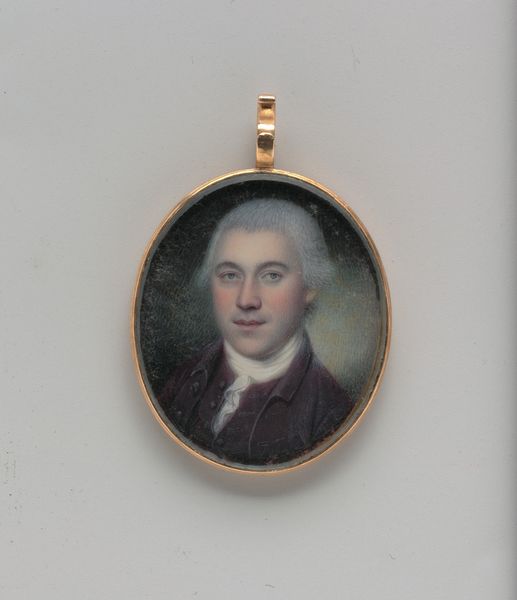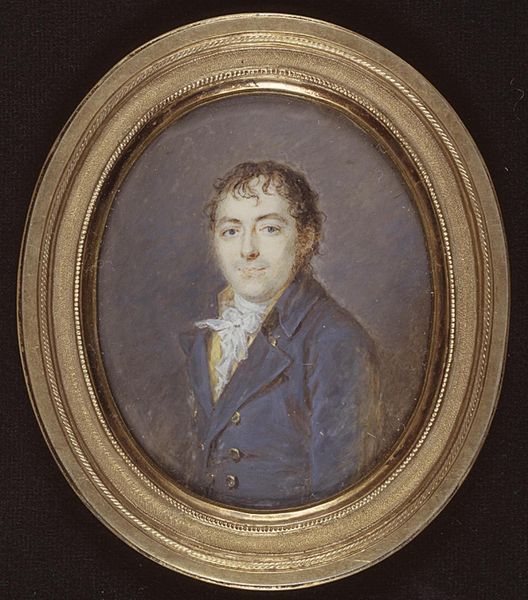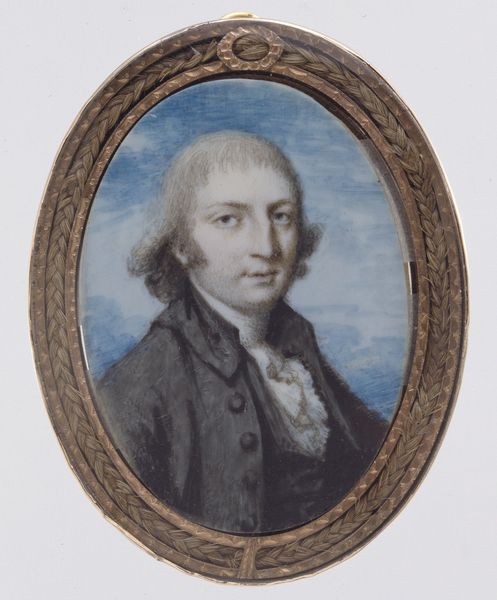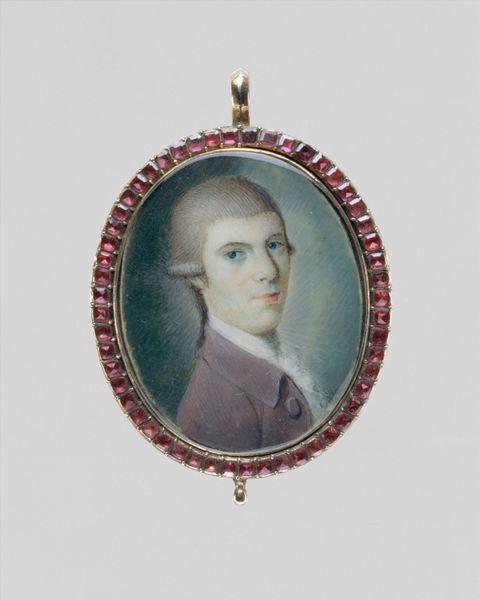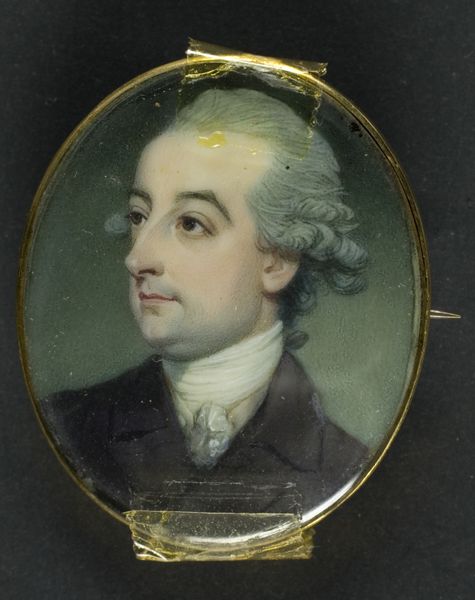
Self-portrait 1758
0:00
0:00
benjaminwest
Yale University Art Gallery (Yale University), New Haven, CT, US
painting
#
portrait
#
painting
#
miniature
#
rococo
Dimensions: 6.4 x 4.6 cm
Copyright: Public domain
Curator: I’d like to introduce you to Benjamin West's "Self-Portrait," a delicate painting rendered in 1758, now residing here at the Yale University Art Gallery. Editor: Immediately, what strikes me is its intimate scale. It’s so small, yet carries such a weight of presence. There is a feeling of gentle introspection in his gaze. Curator: The painting's diminutive size is typical for rococo portrait miniatures, often made to be worn as jewelry or kept as mementos. This immediately brings a domesticity into art history and patronage that often ignores such personal connections to wealth, power and luxury! Editor: That certainly provides a framework, and I immediately get a feeling for how these miniatures allowed for private displays of affection and admiration through coded messages. Curator: Right. Consider the process; these weren’t mass produced. The precision in applying pigment, particularly on ivory or vellum, demanded immense skill and meticulous work conditions, positioning the painting itself as an objet d'art. Editor: I think it is useful to look at his eyes, which appear confident, almost defiant. Despite the constraints of the style and medium, he seems to push back a bit, daring you to look closer, challenging us with the symbolism of the 'self'. What symbols might West have been including or subtly alluding to at that stage of his career? Curator: From a purely material perspective, miniatures served as commodities and were part of vast colonial-era trading networks – the sourcing and valuation of the ivory or the precious metal for the frame all involve social relations. Editor: Yes, of course, but on a slightly different point: it could also suggest the rising merchant or bourgeois classes who desired some self-fashioning. It’s compelling how West has played into—but also slightly undermined—that. Curator: So much in this work is really quite clever when we view its processes within social conditions of class aspiration and luxury. It speaks to something beyond individual vanity. Editor: Ultimately, it seems as much a display of inner life as external success. It’s interesting to unpack those tensions that exist when looking at 'Self-Portrait.' Curator: Agreed. These small artifacts have such potential for revealing a whole lot about production, circulation and class dynamics that are easy to overlook given the common and almost nostalgic associations.
Comments
No comments
Be the first to comment and join the conversation on the ultimate creative platform.

